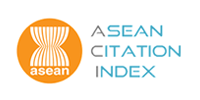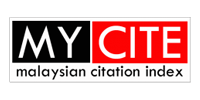Corrosion Behaviour of Mild Steel: Insights from Tafel Extrapolation Analysis in Flowing 3.5% NaCl Solutions and Soil with Diverse Resistivity Levels
DOI:
https://doi.org/10.58915/ijneam.v17iDecember.1632Keywords:
Tafel extrapolation, Mild steel, NaCl solution, Soil & corrosion rateAbstract
The corrosion behaviour of AISI 1006 steel in diverse environmental conditions were comprehensively investigated to offer valuable insights into corrosion mitigation strategies for critical infrastructure protection. This study employed an optical emission spectrometer, pH measurements, soil resistivity assessment, and Tafel extrapolation conducted with a potentiostat. The study encompassed stagnant and flowing 3.5% NaCl solutions, with flow velocities ranging from 0 to 12 km/h, and considered soil corrosiveness based on soil resistivity. In stagnant 3.5% NaCl solutions, minimal corrosion was observed due to limited oxygen availability, resulting in a 6.634 x 10¯3 mm/year corrosion rate. A noteworthy trend was evident in flowing 3.5% NaCl solutions, with corrosion rates peaking at 9 km/h (11.918 x 10¯3 mm/year) and subsequently decreasing at 12 km/h (10.423 x 10¯3 mm/year). This intriguing pattern may be attributed to the potential formation of a protective oxide layer at higher flow velocities, likely due to increased dissolved oxygen and mass transport. The soil's corrosiveness significantly influenced corrosion rates, with lower-resistivity soils exhibiting heightened corrosion rates. In very mildly corrosive soil, AISI 1006 steel displayed a corrosion rate of 2.818 x 10¯4 mm/year. The corrosion rate increased as soil corrosiveness intensified, reaching its peak of 6.319 x 10¯4 mm/year in severely corrosive soil. Extremely corrosive soil led to a corrosion rate of 8.033 x 10¯4 mm/year, as improved soil conductivity accelerated ion transfer and electron flow, ultimately expediting corrosion-related electrochemical reactions. This study enhances the understanding of AISI 1006 steel corrosion in varying conditions, providing critical data for corrosion control in structures and assets, emphasising the need for tailored prevention measures.

















